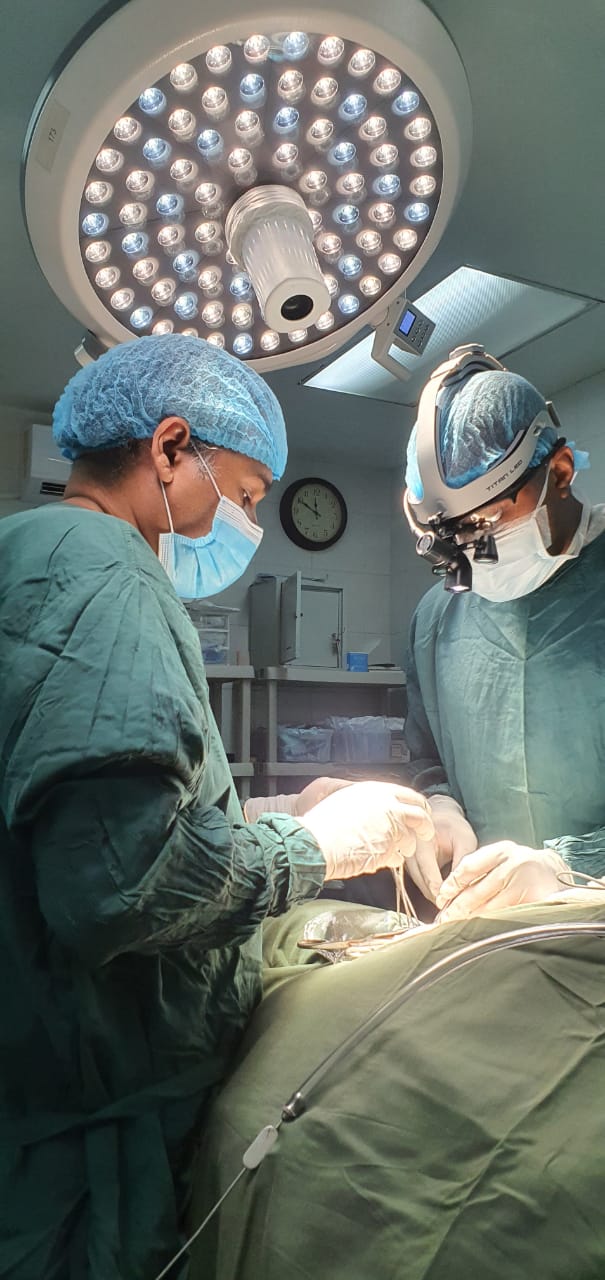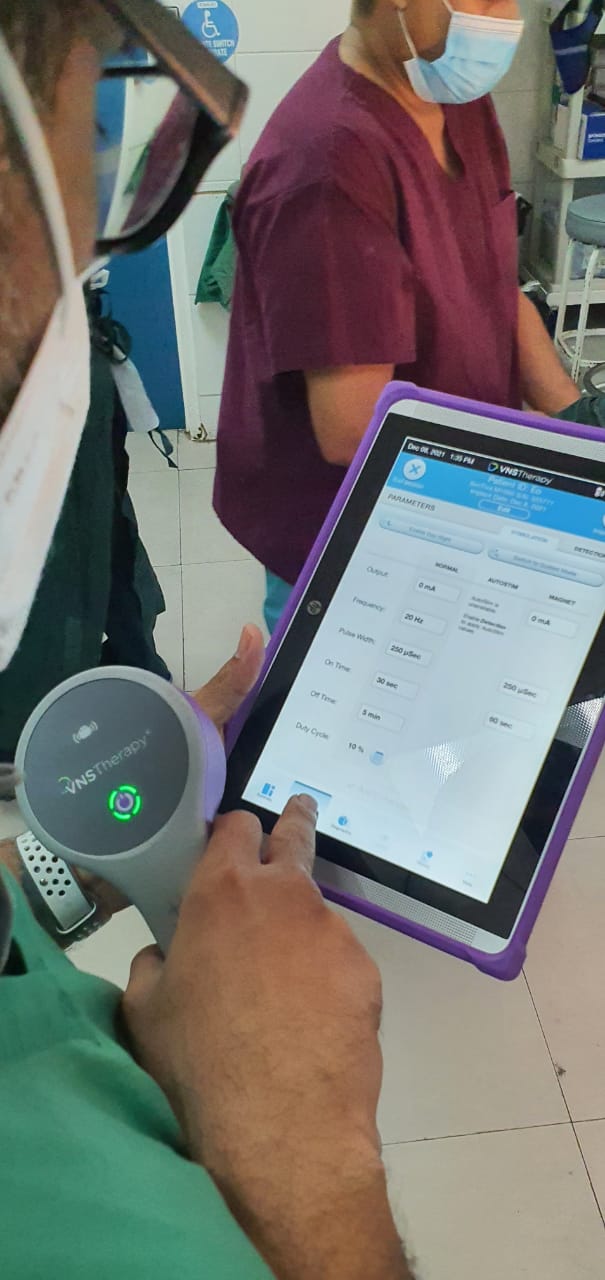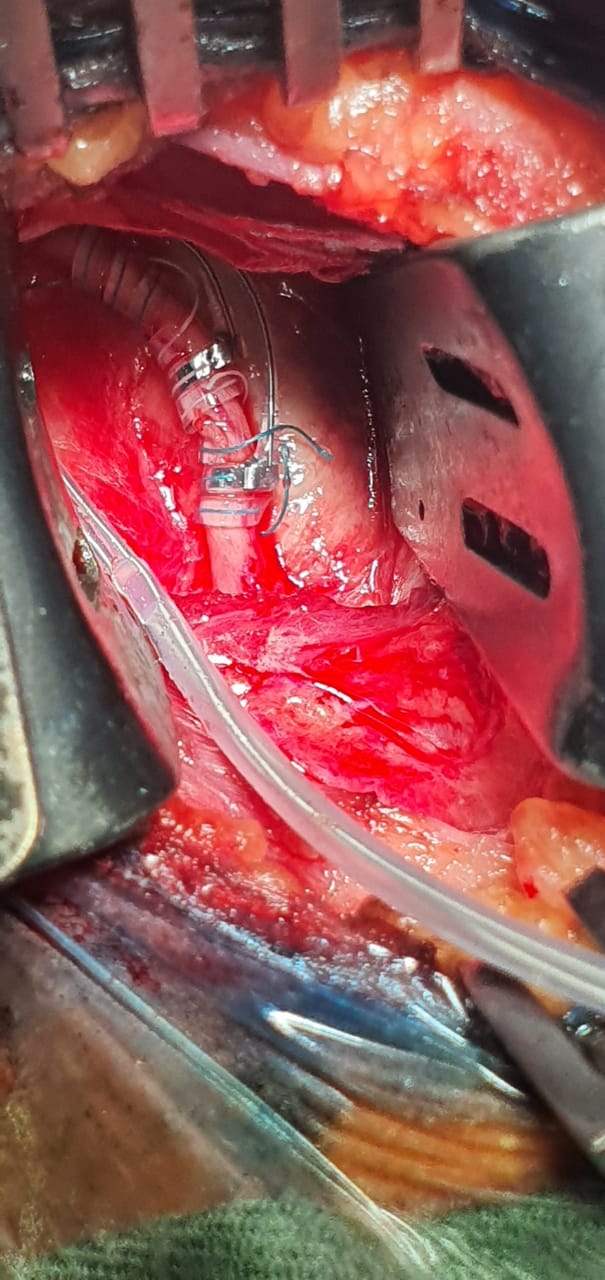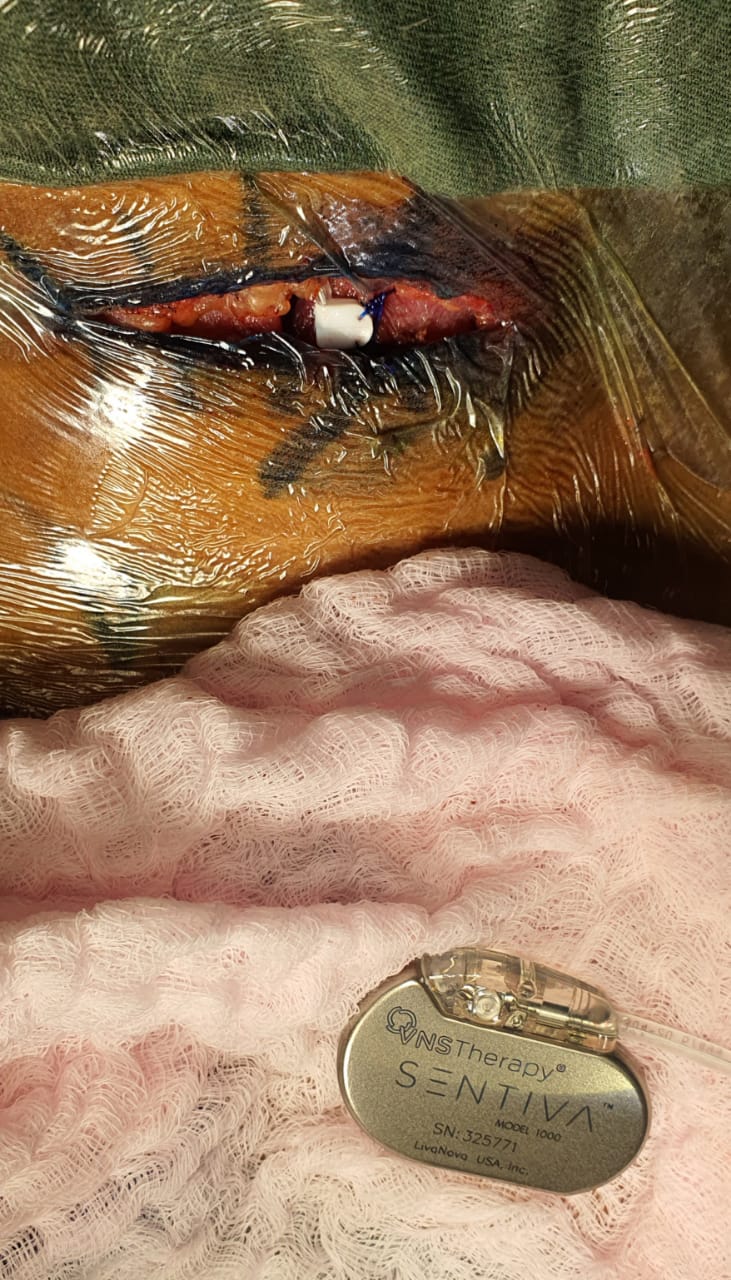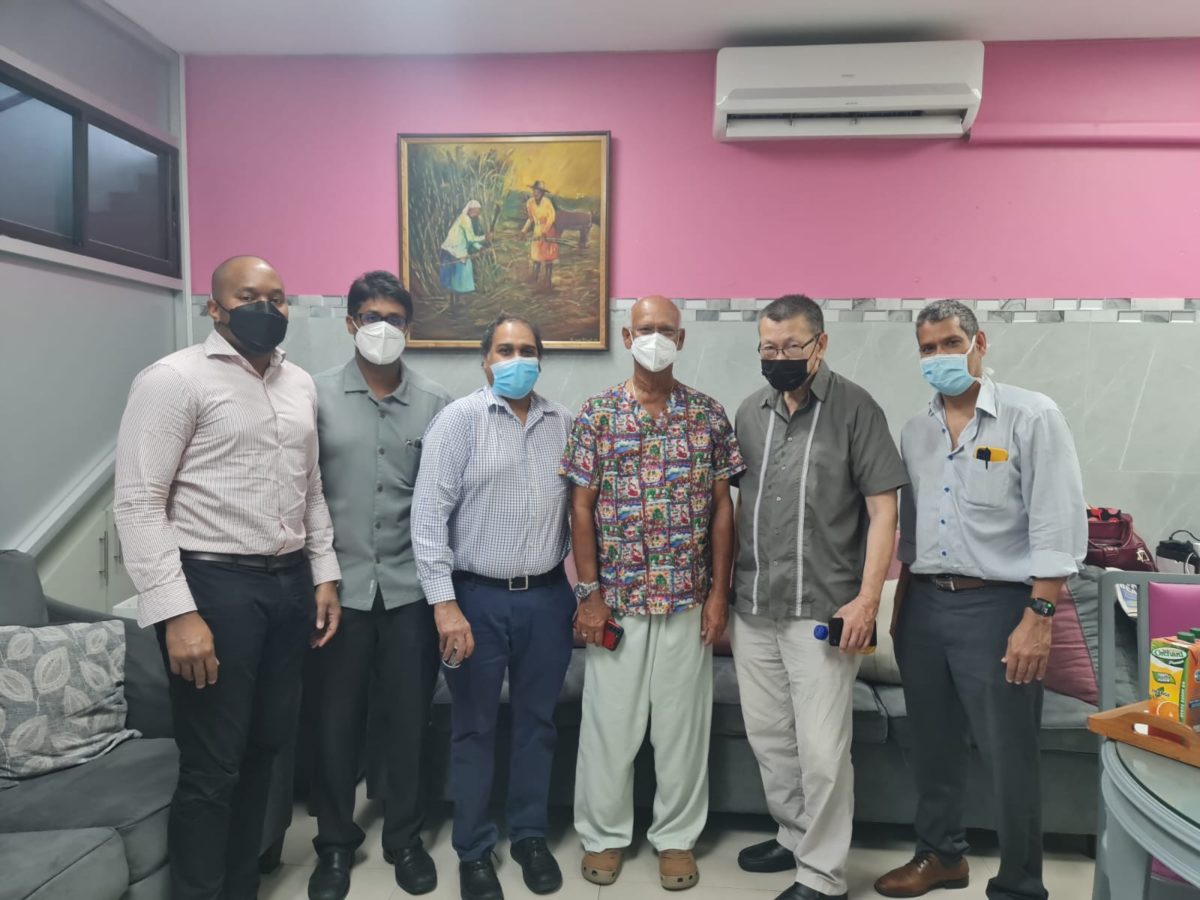
(Left to Right) Neurosurgeon Patrick Knight, Neurologist Avidesh Panday, Neurosurgeon Devindra Ramnarine, Anaesthetist Dr. Aroon Naraynsingh, Dr. Wilson Ayoung Chee from WASCAD (equipment supplier) and Neurosurgeon Robert Ramcharan.
A patient who has suffered with seizures has had a medical device implanted which aims to improve the quality of his life by minimizing his rate and intensity of seizures.
Even after trying multiple medications at the highest doses nothing had worked.
The 18-year-old became the first patient in the English-speaking Caribbean to be fitted with the device sending electrical pulses through a nerve, to the brain.
The procedure was done at the Medical Associates Hospital by Neurosurgeon Patrick Knight, Neurosurgeon Devindra Ramnarine and Neurologist Dr Avidesh Panday. The procedure went smooth and the patient was even discharged on the same day. He is currently undergoing continuous adjustments known as “programming” every two weeks until the right stimulation setting has been determined.
Epilepsy is a disease manifested by seizures or “fits”. A seizure is caused by a burst of uncontrolled electrical activity in the brain between neurons and this is characterized by temporary abnormalities in muscle tone or movements.
This can be interpreted as limpness, twitching or stiffness or even strange behaviors, sensations, thoughts or states of awareness.
There are many different types of seizures but the one most commonly known is the Gran-mal or generalized tonic- clonic seizure where a patient would suffer violent shaking and loss of consciousness.
It is a very debilitating disease because of the potential for brain damage with each episode as well as the risk of danger to oneself or others.
The vagal nerve stimulator VNS Therapy® also called vagus nerve stimulation is approved to treat seizures that do not respond to seizure medications.
Vagus nerve stimulation works by sending regular, mild pulses of electrical energy to the brain via the tenth cranial nerve which can be found in the neck next to the carotid artery, and this may lessen or prevent seizures.
The apparatus consists of a generator or battery that is implanted under the skin in the left chest area and a cable which is wrapped around the vagus nerve in the neck. The cable is tunneled under the skin to connect with the generator.
The device is programmed in the outpatient clinic by the Neurologist to deliver pulses or stimulation at regular intervals.
A person with a VNS device is usually not aware of the stimulation while it is working and it functions autonomously.
